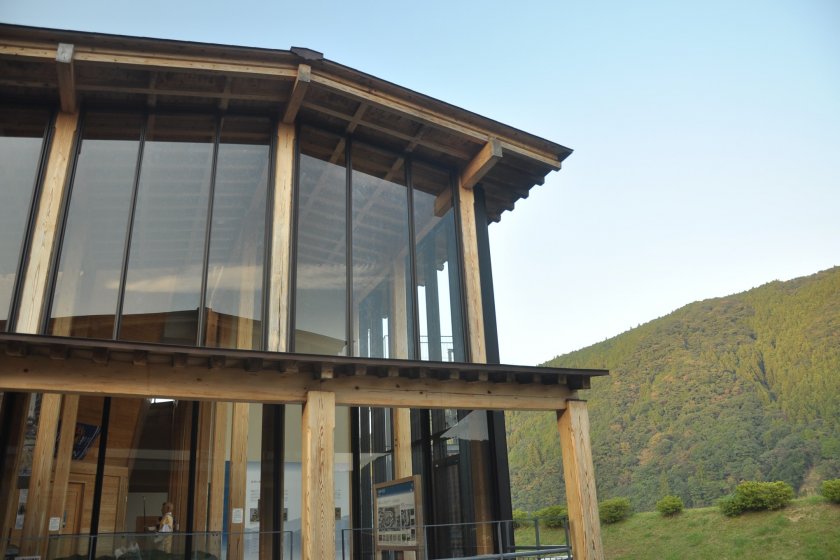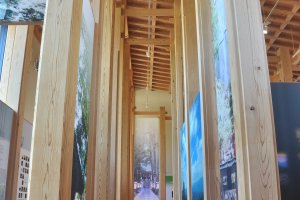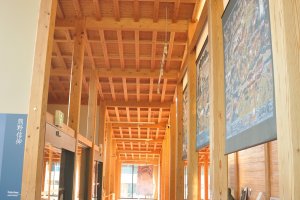As the converging point of all Kumano pilgrimage routes, the Kumano Hongu Taisha is the center of pilgrimage. With more than a thousand years of history, the shrine, together with many other sacred sites on Yoshino and Omine, Kumano Sanzan and Koyasan, was inscribed as a UNESCO world heritage site in 2004 as a recognition of its unique cultural landscape chronicling the development of Shinto in Japan, as well as for the authenticity and beauty of its religious architecture. It seems a fitting place, therefore, to have a World Heritage Center on its premises.
Housed in two modern buildings constructed primarily of wood, the world heritage center has an architectural style that blends coherently with the forest and river in its surroundings. The south building has a large center that gives very comprehensive tourist information on transportation, background knowledge of the Kumano Kodo, and a history of the shrines in the region, most of which are designated as World Heritage Sites. The staff here is very friendly and always welcome any inquiries.
The rest of the space is an exhibition that introduces the five pilgrimage trails and their history in detail. It uses a broader approach and touches upon the background of the whole region and the trails' connections with one another. To go even further geographically, it mentions the Way of Saint James, another famous pilgrimage route that leads to Santiago de Compostela in Spain, also recognized as a World Heritage Site. Reference is made to other religious heritage sites that also boast wonderful landscape and architecture, such as Ellora Cave in India.
The north building continues the stories of Buddhism, Shinto and pilgrimage. But here the content is more local. Descriptions on the daily lives of monks, their stories while on the pilgrimage routes, and their clothing and equipment are clearly explained. There are drawings and old scriptures that testify to the sacred status of the mountain trails and the various shrines. When hiking through the mountains or even just visiting the shrines, having this background information in mind would make the experience even more interesting.
Along with the exhibition and tourist information center, there is also a seminar room in the north building, which is used for symposiums and presentations of relevant topics.The Kumano Hongu Heritage Center is free of charge. Next to the center on the west is the Kumano River; and behind it on the south is a huge torii, where celebration or parades are occasionally held. Don’t forget to take a look at them after visiting the shrine!


































